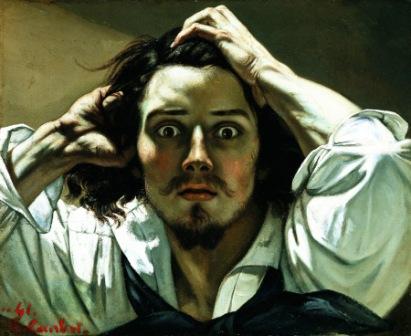How to cure panic disorder
What is a panic attack and how it differs from panic disorder?
Panic attack is an episode expressed discomfort or fear with desire panic attacks during which suddenly appear. That at least has four of the following symptoms:
- Pronounced heartbeat.
- Sweating.
- Tremor.
- The feeling of closeness or shortness of breath.
- The feeling of suffocation.
- Chest pain.
- Nausea or other gastrointestinal symptoms.
- Dizziness.
- Unpleasant bodily sensations.
- Chills, or blood flow to the person.
- A feeling of unreality or a feeling of detachment from oneself.
- Fear of losing control or going mad.
- Fear of death.
Mental disorders in which panic attacks may experience:
- Various phobias (including social).
- Depression.
- Withdrawal symptoms of psychoactive substances (alcohol, drugs).
- Etc.

Actually panic disorder is the appearance of repeated, unexplained mental attacks. People with panic disorder, at least a month to worry about the repetition of the attack or the possible consequences of such (eg, death, car accident, failure to perform their duties). Individuals suffering from panic disorder, often linked their attacks to certain situations (such as staying in a traffic jam or in a crowd) and can fill future panic attacks waiting to enter such a situation. They may begin to avoid those situations which, in their opinion, can trigger panic attacks. In many cases, panic disorder attack appear suddenly, without any provoking factor.
How to effectively treat panic disorder?
The greatest impact in the treatment of panic attacks gives the combination of pharmacotherapy and psychotherapy.
Benzodiazepines with a rapid onset of action (such as alprazolam) are suitable for the rapid decline in the intensity of panic symptoms. Preparations with a slower onset of action and longer half-life (such as clonazepam) may be preferable for the prevention of panic attacks in the future i.e. especially when they are taken regularly, according to the established regime. A new generation of antidepressants like fluoxetine, sertraline, paroxetine, and others are also seen very effective and have preferred to TCA because of better tolerability.
One only drug therapy used less and less. Found that the frequency of relapses after drug withdrawal exceeds 50%. Although the drugs clearly reduce the frequency of attacks and severity of symptoms, they are not particularly effective in reducing the likelihood of anxious foreboding or phobic avoidance. To treat such aspects of panic disorder is particularly suitable cognitive-behavioral therapy (CBT).
CBT is usually short-term psychotherapy, which includes exercises for relaxation with the study of disturbed thought processes. Patients are taught to modify these processes, which helps reduce the sense of foreboding. Then they are gradually exposed to situations involving the appearance of panic attacks, in order to pay their alarm response and reduce phobic avoidance. CBT helps people to successfully reduce the dose of drugs such as benzodiazepines, without immediate recurrence of symptoms, thus improving treatment outcome in general. If the patient has a relapse of symptoms occurs, then to limit the severity and duration of relapse are often suitable brief reminder of techniques CTC.
It is important to remember that, despite the information given here should take into account their general character. The choice of therapy, specific drug are best left to an experienced specialist in the field of mental health. It must be remembered that the treatment of panic disorder should be prolonged, not only to eliminate the panic attacks, but to prevent their recurrence, to stabilize the condition.
Posted in Head and Brain